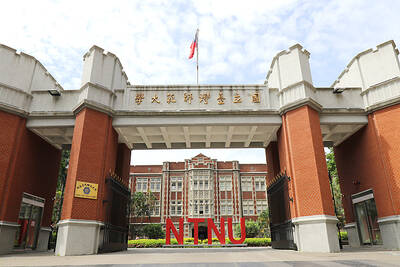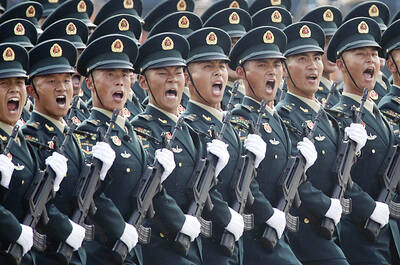A senior Chinese official yesterday called for both sides of the Taiwan Strait to oppose Taiwanese independence and recognize the so-called “1992 consensus” in order to lay a common ground to develop peaceful relations.
Jia Qinglin (賈慶林), chairman of China’s top political advisory body — the National Committee of the Chinese People’s Political Consultative Conference — made the remarks in the presence of former Chinese Nationalist Party (KMT) chairman Wu Poh-hsiung (吳伯雄) as the KMT-Chinese Communist Party (CCP) forum opened in Chengdu, Sichuan Province.
The “1992 consensus” refers to a tacit understanding ostensibly reached in a meeting in 1992 under which Taiwan and China agree that there is only “one China,” but the two sides can have different interpretations of what that means.
The Democratic Progressive Party (DPP) insists that the “1992 consensus” does not exist. In 2006, former Mainland Affairs Council chairman Su Chi (蘇起) admitted he made up the term “1992 consensus” in 2000 before the KMT handed power over to the DPP.
Wu, head of the KMT delegation, stressed the importance of the forum in a speech during the opening ceremony.
Wu said that ideas proposed at the past six cross-strait economic trade and cultural forums had become major policies for both sides of the Taiwan Strait.
“The forum has made its contribution, providing reference in formulating policies for both governments,” Wu said.
Wu said peaceful cross-strait relations had been a major factor in helping Taiwan emerge from the shadow of the latest economic crisis.
The implementation of the Economic Cooperation Framework Agreement (ECFA), which was signed in June last year, has also contributed to Taiwan’s return to economic prosperity, he said.
Wu also appealed for more direct cross-strait flights and an increase in the number of Chinese cities and provinces allowing residents to visit Taiwan independently rather than as part of a tour group.
China plans to only allow residents of a few cities, such as Beijing and Shanghai, to travel to Taiwan as independent tourists when the program begins, possibly before the end of next month.
Wu said that after the launch of Taiwan’s high-speed rail in 2007, domestic flights had declined dramatically. With China also expanding its high-speed rail services, its domestic flights will decrease. He expressed hope that the spare flights could be diverted toward direct cross-strait flights.
“The present 370 weekly cross-strait flights can hardly meet the travel needs of people across the Taiwan Strait,” Wu said.
Jia said that both China and Taiwan would like to see independent Chinese tourists travel to Taiwan next month.
Citing China’s 12th five-year plan along with Taiwan’s “golden decade” project to promote economic transformation, Jia expressed hope that both sides could strengthen economic cooperation through their economic development proposals.
Eight seminars will be held at the forum, with nuclear safety added to the agenda for the first time.

CHANGING LANDSCAPE: Many of the part-time programs for educators were no longer needed, as many teachers obtain a graduate degree before joining the workforce, experts said Taiwanese universities this year canceled 86 programs, Ministry of Education data showed, with educators attributing the closures to the nation’s low birthrate as well as shifting trends. Fifty-three of the shuttered programs were part-time postgraduate degree programs, about 62 percent of the total, the most in the past five years, the data showed. National Taiwan Normal University (NTNU) discontinued the most part-time master’s programs, at 16: chemistry, life science, earth science, physics, fine arts, music, special education, health promotion and health education, educational psychology and counseling, education, design, Chinese as a second language, library and information sciences, mechatronics engineering, history, physical education

The Chinese military has boosted its capability to fight at a high tempo using the element of surprise and new technology, the Ministry of National Defense said in the Quadrennial Defense Review (QDR) published on Monday last week. The ministry highlighted Chinese People’s Liberation Army (PLA) developments showing significant changes in Beijing’s strategy for war on Taiwan. The PLA has made significant headway in building capabilities for all-weather, multi-domain intelligence, surveillance, operational control and a joint air-sea blockade against Taiwan’s lines of communication, it said. The PLA has also improved its capabilities in direct amphibious assault operations aimed at seizing strategically important beaches,

New Taipei City prosecutors have indicted a cram school teacher in Sinjhuang District (新莊) for allegedly soliciting sexual acts from female students under the age of 18 three times in exchange for cash payments. The man, surnamed Su (蘇), committed two offenses in 2023 and one last year, the New Taipei District Prosecutors’ Office said. The office in recent days indicted Su for contraventions of the Child and Youth Sexual Exploitation Prevention Act (兒童及少年性剝削防制條例), which prohibits "engaging in sexual intercourse or lewd acts with a minor over the age of 16, but under the age of 18 in exchange for

The High Prosecutors’ Office yesterday withdrew an appeal against the acquittal of a former bank manager 22 years after his death, marking Taiwan’s first instance of prosecutors rendering posthumous justice to a wrongfully convicted defendant. Chu Ching-en (諸慶恩) — formerly a manager at the Taipei branch of BNP Paribas — was in 1999 accused by Weng Mao-chung (翁茂鍾), then-president of Chia Her Industrial Co, of forging a request for a fixed deposit of US$10 million by I-Hwa Industrial Co, a subsidiary of Chia Her, which was used as collateral. Chu was ruled not guilty in the first trial, but was found guilty